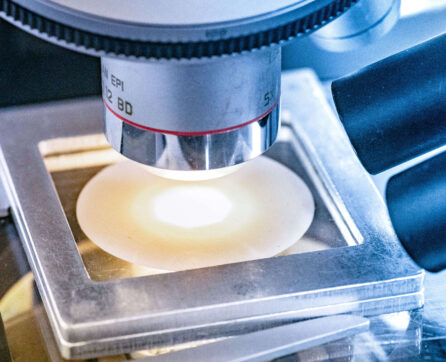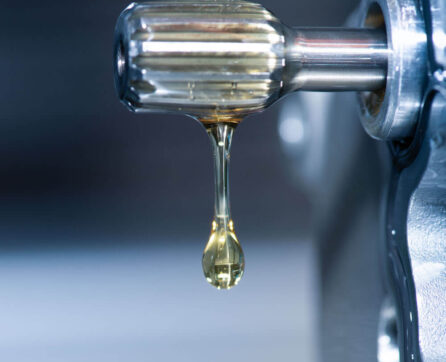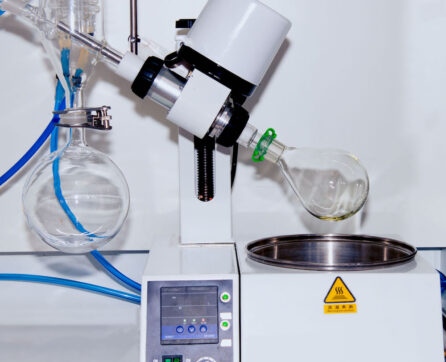The removal and identification of contamination from components – used in automotive, aerospace, hydraulics and production systems, for example – are vital in order to achieve greater reliability and longevity of products. This is of great importance to manufacturers, suppliers and end-users alike, in avoiding costly failures and recalls, and to satisfy longer warranty periods.

Manufacturing processes have the potential to contribute dirt, fibres and other debris into finished systems, with each component potentially adding its own particulate contamination. As technology develops and these systems become more efficient they also become less tolerant to contamination, making Cleanliness Testing and analysis a crucial part of the production and approval process.
Particle Technology is the only laboratory in the UK to perform UKAS accredited Cleanliness Testing to ISO 16232 / VDA 19. We can perform testing to an extensive range of international, manufacturer and customer specifications on parts or components ranging from washers, pipes and bolts through to fuel tanks and engine blocks.
The maximum component weights and dimensions currently able to be tested under our UKAS accreditation are as follows:
Unaccredited testing is still available on components larger or heavier than this. Please get in touch to discuss your requirements.
As well as performing Cleanliness Testing services, we also supply and install equipment for you to carry out analysis of the technical cleanliness of your components on your own premises. Please see our Component Cleanliness Analyser page for more information.
Our state-of-the-art laboratory is equipped with:
All cleanliness equipment is housed within our separate clean area to ensure that contamination is minimised. Cleanliness of the facilities, equipment and rinse fluid is verified before analysis by obtaining a “blank”. This is where the agreed test is performed in the absence of your sample using the same, measured test parameters with the typical Pass/Fail criteria for the blank being <10% of the Pass/Fail criteria of the test being performed. Only once this has been verified will your test commence, assuring the highest confidence in your test results.

The microscope system can categorise particles into reflective and non-reflective to give an indication of the ratio of metallic and non-metallic particles.
For a more in-depth analysis of the contamination, the larger or “failing” particles can be analysed using our XRF microscope – providing information on the elemental composition of the particles which is can be utilised during root cause analysis and matching to possible sources.
The microscope analysis also identifies the number of particles in different size classes, including the longest particles and fibres according to the applicable test standards applied.
Results are recorded and sent to the customer in a report.

An increasingly popular service offered by Particle Technology is our contract cleaning and flushing services. This option is utilised where our customers have a requirement to test, clean or otherwise improve the cleanliness of 100% of the components/products they produce for industries such as aerospace or high performance engine systems, where both safety and performance are critically important.
This option is generally tailored to suit your specific needs and we have experience and the ability to design and create bespoke elements to facilitate or improve the process. Such elements range from relatively simple modifications to our existing equipment (e.g. clamps, fixings, nozzles or other interfaces between our equipment and your parts) through to complete flushing rigs custom built around your requirements.

Certain parts (for example, those to be used in oxygen-rich environments) have requirements for the maximum allowable NVH residue (grease, oils etc.).
We have the ability to carry out testing to determine the mass of this residue present on your parts.
Due to the nature of the test, limitations may apply, so if it is of interest then please get in touch to discuss your requirements further.
Whether you are trying to meet customer requirements or satisfy internal QC/QA checks, you may need to know how clean (or dirty as the case may be) your fluid sample is.
ISO 4406 specifies cleanliness codes relating to the number of particles per ml of test fluid. We have an automated particle counter capable of directly analysing your fluid samples. Where larger particulate contamination is expected, or where the contamination is to be retained, we can analyse the fluid sample by filtering a known volume and counting/sizing the particulate retained using automated optical microscopy as per ISO 4407.
We have facilities that can perform this analysis on a range of fluid types providing that you provide the relevant safety information. Please contact us to discuss this further.
The removal and identification of contamination from components – used in automotive, aerospace, hydraulics and production systems, for example – are vital in order to achieve greater reliability and longevity of products. This is of great importance to manufacturers, suppliers and end-users alike, in avoiding costly failures and recalls, and to satisfy longer warranty periods.
Want to know more? Please get in touch and let us help you by making particles count.